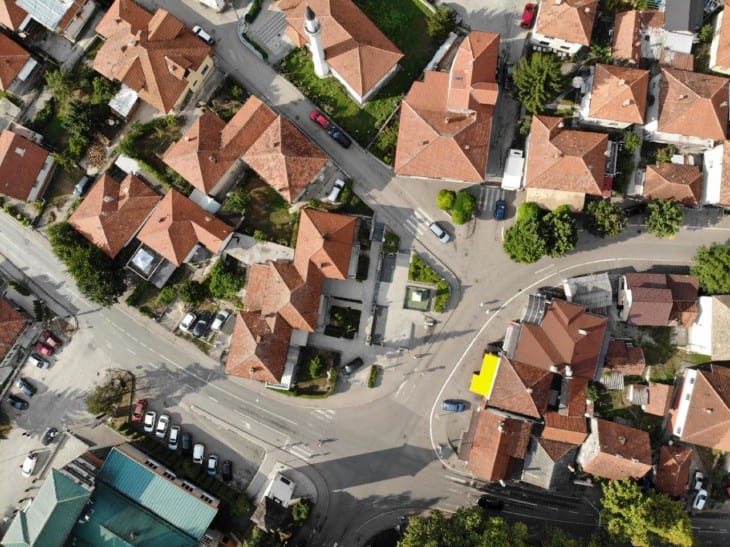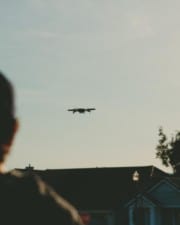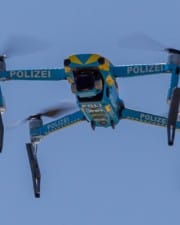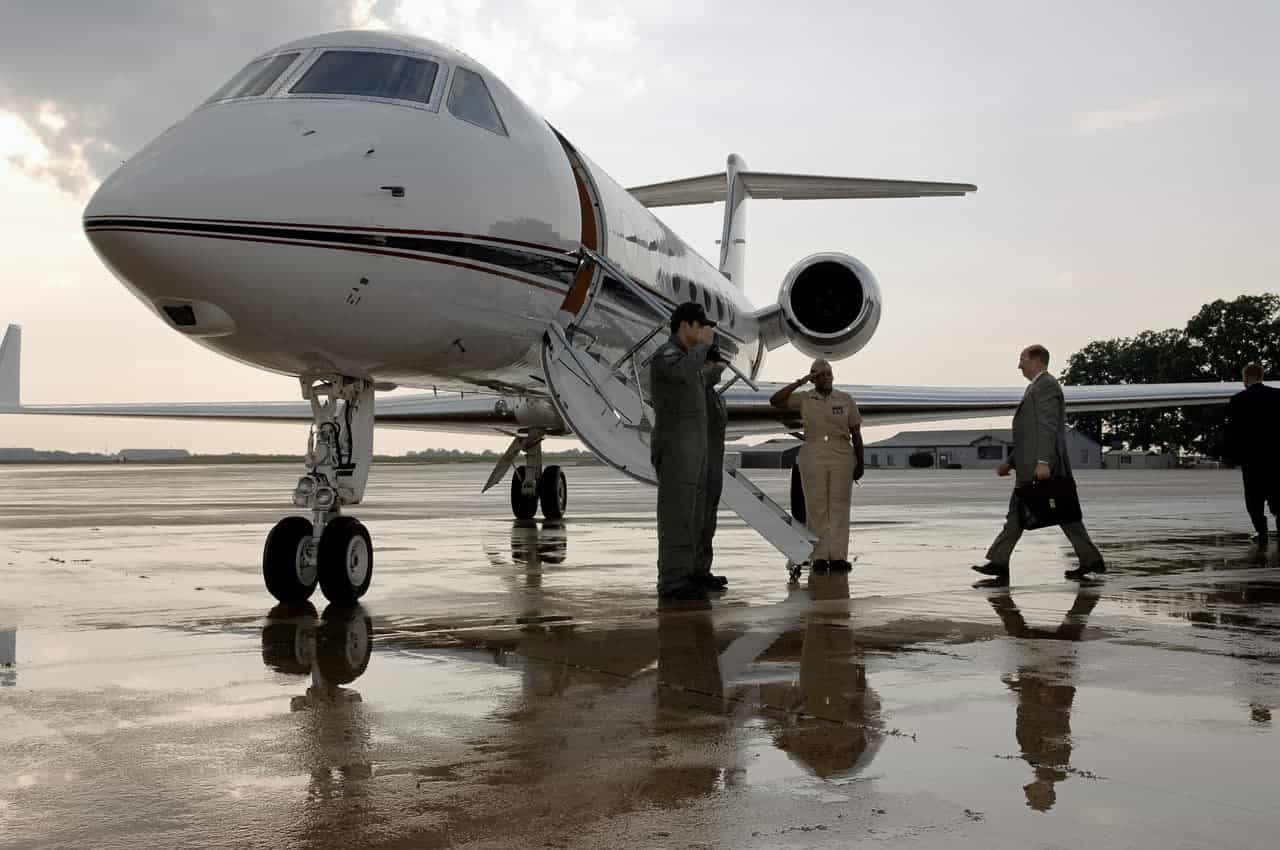After flying drones over their own properties a few times, drone owners may wonder how far they can fly their devices. They may be able to fly their drones down the street but, but can flying one over a neighbor’s property result in a fine?
TLDR – There are no federal laws against flying a drone over private property as the FAA only regulates airspace above 400 feet. However, some areas have passed local or state laws to prohibit drones over private properties. Before navigating a drone over a residence, pilots should check local laws and regulations.
Can My Neighbor Fly a Drone Over My House?
In most states and local jurisdictions, drones can legally fly over private properties but the laws vary. The drone operator needs to ensure that they are not violating any local laws or regulations. This may include laws related to an invasion of privacy, trespassing, or creating a nuisance.
The Federal Aviation Administration (FAA) is the federal agency responsible for regulating airspace. As a federal agency, laws introduced by the FAA override state and local laws. However, the FAA does not yet restrict recreational drones in uncontrolled airspace.
Uncontrolled airspace is defined as the airspace below 400 feet above the ground (AGL). Without FAA laws prohibiting recreational drones below 400 feet, local and state laws still apply. Along with limiting recreational drone flying to 400 feet or below, the FAA has several requirements for drone operators:
- Maintain a visual line of sight with the drone
- Do not fly at night unless the drone has lighting
- Give way to and do not interfere with manned aircraft
- Do not fly over people or moving vehicles
- Never fly under the influence of alcohol or drugs
- Never interfere with emergency response activities
- Do not operate the drone in a careless or reckless manner
The FAA has also announced plans to expand its laws related to recreational drone use. In the future, the FAA may require drone operators to pass an online test. Drone operators may also need to register their drones.
For now, the laws concerning flying over a private property depend on local and state laws. For example, homeowners in the state of Oregon can sue drone operators if the drone flies below 400 feet over the property more than once without explicit permission from the homeowner.
In Florida, drone operators may not use drones for surveillance if it violates a person’s privacy. Individual communities may also have restrictions against flying drones in residential areas, requiring the drone operator to research all applicable local laws.
What Can I Do If a Neighbor Flies a Drone Over My Property?
If a drone operator flies a drone of a neighbors’ house, the neighbor may have the right to file a criminal or civil complaint. The neighbor should first check laws or community regulations for recreational drone flying.
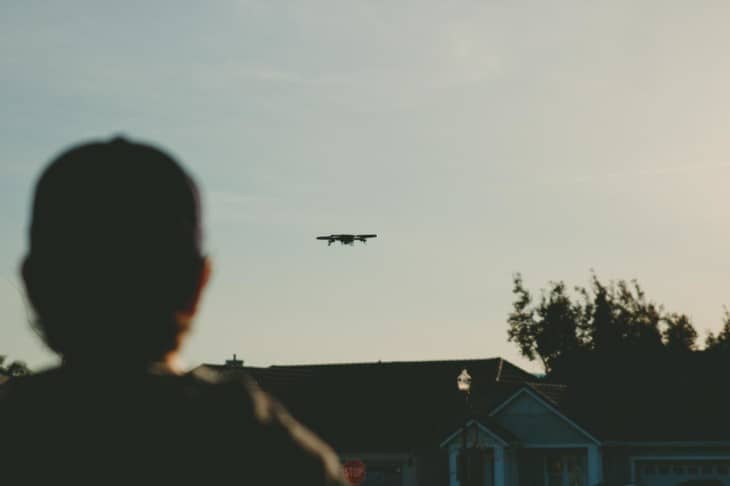
If the local or state laws prohibit drones in residential areas or over private properties, the neighbor may file a complaint. The local law enforcement agency may then fine the drone operator and possibly confiscate the drone, depending on the laws that were violated.
Without specific laws against drone operations in residential areas, the neighbor still has a few options for penalizing the drone operator. While the laws vary in each state, the neighbor may file a lawsuit against the drone operator claiming that the drone:
- Invaded their right to privacy
- Trespassed on their property
- Created a nuisance
Civil lawsuits will typically require evidence, such as photos or videos of the drone flying over the private property. However, the drone operator will also likely have GPS data and other flight data to verify the flight path of the drone.
How To Stop Drones From Flying Over Your House
Many drones are equipped with cameras. If a homeowner can demonstrate that the drone’s camera invaded their privacy, they may have a case against the drone operator. 24 states currently have laws related to privacy and drones.
In cases of invasion of privacy, the judge may grant a temporary restraining order, preventing the drone operator from flying over the residence. Trespassing applies to people and objects, including trees. If a tree branch extends over the property line, it is trespassing and may be trimmed by the property owner.
If a drone flies within the property boundaries, the homeowner may claim that the drone was trespassing. However, most laws do not state how much of the airspace above the home is considered within the property’s boundary. Photographic evidence that the drone flew near the home may help the homeowner’s case.

A third option is to claim that the drone created a nuisance. If the sound of the drone disrupts a homeowner’s sleep or enjoyment of their property, they may file a lawsuit against the drone operator. If the judge agrees with the homeowner, the drone operator may be required to stop creating a nuisance.
Along with filing a lawsuit against the drone operator, some homeowners may attempt to jam the drone’s signal. Jamming is the process of blocking the radio signal between the drone and the operator. When a drone loses communication with the controller, it is often programmed to return to its takeoff location or a preset home location. However, using a jammer to intentionally interfere with authorized radio communication is a violation of federal law.
What Happens If You Fly a Drone Above 400 Feet?
The FAA restricts recreational drones from flying above 400 feet. The airspace above 400 feet is considered “controlled airspace” and is heavily regulated by the FAA. If a drone operator flies a drone above 400 feet without the necessary licenses and permissions, they may face civil or criminal penalties.
However, the likelihood of a drone operator being caught for violating controlled airspace is slim. In most cases, the drone operator would need to create a disturbance that warrants an investigation. For example, if a drone flies above 400 feet and interferes with a manned aircraft, the FAA and local authorities would likely attempt to track down the drone operator.
The 400-foot limit was created to reduce the risk of recreational drones striking or interfering with manned aircraft. Service helicopters often fly between 500 and 1000 feet. They may also fly lower when landing on a helipad.
Most modern recreational drones include a mechanism that limits the altitude of the drone to 400 feet. However, drone operators may use custom firmware to override the mechanism. There are also commercial drones designed to fly at higher altitudes.
Before flying above 400 feet even with a commercial drone, the drone operator needs to obtain a commercial drone pilot license. They must then request permission to fly in controlled airspace.
Can The Police Fly a Drone Over Private Property?
In most jurisdictions, law enforcement agencies are not explicitly prohibited from flying drones over private properties. A citizen may claim that a police drone violated their right to privacy. However, it is currently uncertain how low a drone can fly over a private residence without violating the homeowner’s privacy.
Most legal experts recommend that police avoid flying drones over private properties or using them for surveillance due to the vagueness of current laws. Any evidence obtained may be inadmissible in court.
Related Posts
